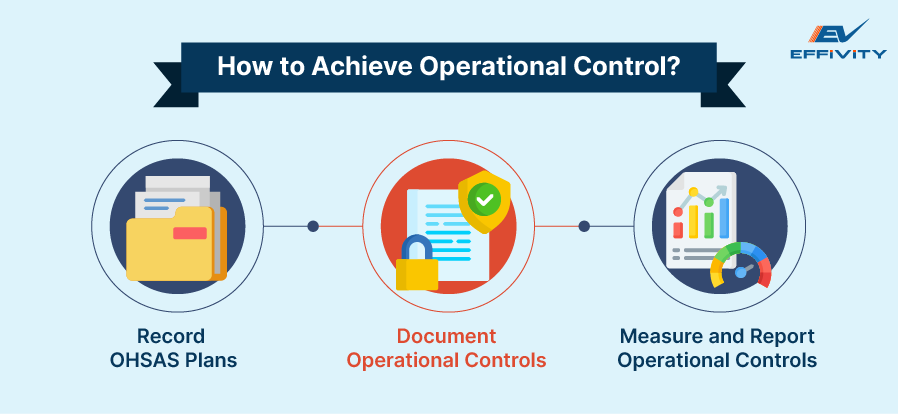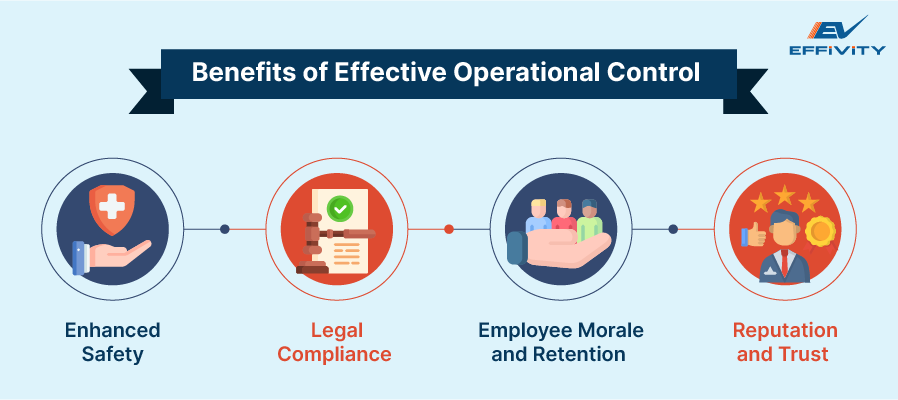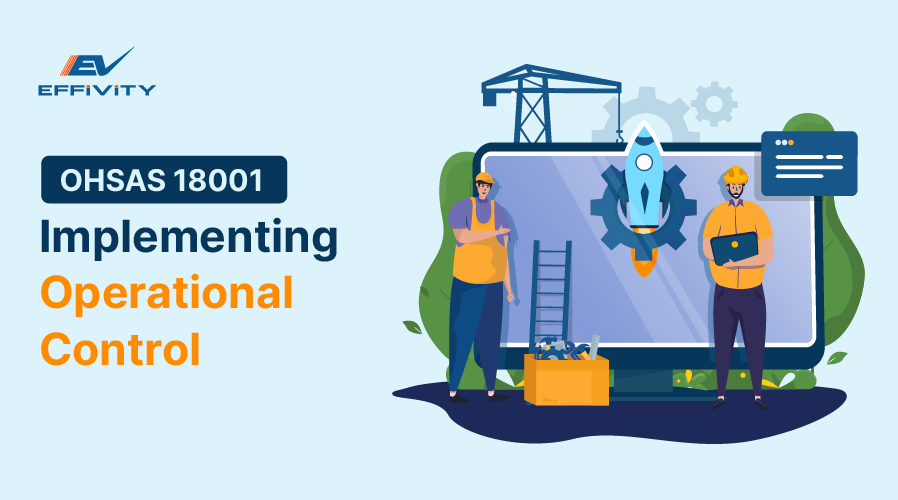Ensuring employee’s health and safety is one of an organization's fundamental responsibilities. Offering a healthy working environment that controls risks and safety hazards not only improves employee satisfaction and productivity but also reduces organizational costs due to accidental illness or injuries.
Within the scope of workplace safety, a robust occupational health and safety management system provides a comprehensive framework to control OH&S risks and demonstrate commitment to sound OH&S performance. The OHSAS 18001 standard oversees the process and implementation of OHSMS within an organization and lays down various requirements for effective control.
In this article, we'll understand the requirement of operational control within the OHSAS 18001 standard and its benefits.
What is Operational Control in OHSAS 18001?
Within the ISO 18001 standard for occupational health and safety management, operational control refers to the processes or procedures that help identify any issues within the system and apply corrective actions to minimize non-conformities.
Operational control is a critical aspect of the health and safety management system as it ensures that the management systems perform in a way that achieves its goals. For instance, within your OHSAS 18001 system, you might have requirements for internal audits or risk assessment.
The level of operational control in your workplace should ensure that these activities are conducted regularly and that the outputs and actions are managed effectively to improve the overall system.
In essence, you could have excellent workplace policies, procedures and practices to manage health and safety. Still, these will not be enough if you don't have the operational controls in place to achieve the desired results.
How to Achieve Operational Control?
To achieve operational control and fulfill OHSAS 18001 requirements, organizations need to

Record OHSAS Plans
Record the plans for OHSAS that will assist you in maintaining operational control. You can either do this in a planning diary or use automated health and safety management software to record OHSAS plans and share them with the team to ensure everyone is on top of the requirements and schedules.
Consider implementing a colour coding system to indicate completed or closed actions from a certain event. This will also help demonstrate the company's commitment to employee engagement and operational control.
Document Operational Controls
The OHSAS team must also create a log of the operational controls and ensure all allocated tasks are completed. In addition, they must ensure operational control activities are updated and carried out diligently.
It is important to review, modify and improve operational controls regularly, preferably by considering stakeholder and employee input. Involving stakeholders in managing and implementing operational controls is imperative for effective health and safety management.
Further, you must also use corrective actions promptly to ensure the operational control process is effective.
Measure and Report Operational Controls
The OHSAS representative is responsible for measuring and reporting the efficiency of the operational controls to the top management and the health and safety teams. This will help conduct timely internal audits and management reviews to ensure everything is going as planned and implemented.
If this risk assessment or internal audit is not conducted promptly, it will affect the operational control level and impact the OHSAS implementation.
The OHSAS 18001 standard refers to operational controls with respect to the company's policies and procedures, change management, purchasing and contractors. If operational control was considered when creating your OHSAS policies, you can use these methods discussed above to manage internal control and ensure your OHSAS system works effectively.
In short, you need to define responsibilities and methods, then monitor, process, review and modify them within the health and management system to ensure effectiveness.
Benefits of Effective Operational Control
Here are the various benefits of effective operational control under OHSAS 18001:

1. Enhanced Safety
Effective operational control significantly enhances workplace safety by systematically identifying and mitigating potential hazards. By implementing well-defined procedures and controls, organizations can prevent accidents and reduce the incidence of work-related injuries and illnesses. This proactive approach to safety not only protects employees but also creates a culture of safety awareness and responsibility.
2. Legal Compliance
Adhering to the OHSAS 18001 standard ensures that an organization complies with relevant health and safety laws and regulations. This compliance helps avoid legal penalties, fines and other regulatory repercussions from non-compliance. With proper operational controls in place, you can ensure that people in the organization follow the right procedures to maintain workplace safety.
Further, by staying up-to-date with legal OHSMS requirements, organizations can prove their commitment to maintaining high levels of health and safety.
3. Employee Morale and Retention
A strong focus on health and safety through operational controls positively impacts employee morale and retention. When employees see that their well-being is a priority, they are more likely to be happy with their jobs and remain loyal to the company.
This also translates to improved efficiency and productivity. When employees feel safe, they will be engaged and motivated, leading to improved performance.
4. Reputation and Trust
Organizations that effectively implement and maintain robust health and safety controls under the OHSAS 18001 standard enhance their reputation among customers, partners and stakeholders.
Demonstrating a commitment to health and safety builds trust and credibility, which can be a competitive advantage in the marketplace. This positive reputation can attract new business opportunities and foster long-term relationships.
Wrapping Up
Demonstrating strong operational controls is crucial for effective OHSMS management and creating a safe and healthy workplace for your employees. From enhancing safety and legal compliance to improving efficiency, reputation and employee morale, the advantages are far-reaching.






























